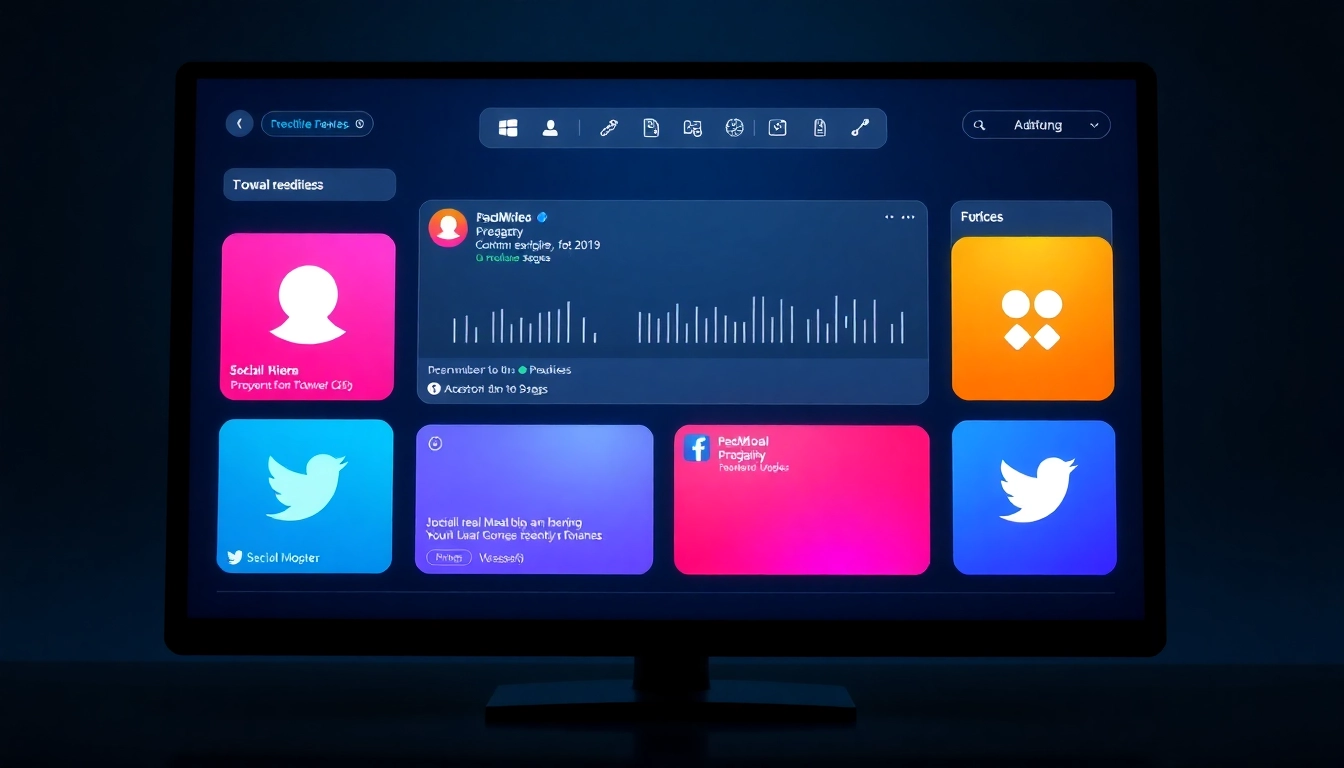Effective Strategies to Stay Updated with Social Media Platform Updates in 2024

Understanding the Importance of Social Media Platform Updates
How platform changes impact marketing strategies
In the rapidly evolving landscape of digital marketing, staying abreast of Social Media Platform Updates is essential for maintaining a competitive edge. Every platform—be it Facebook, Instagram, LinkedIn, TikTok, or Twitter—regularly implements changes that can significantly influence how brands connect with their audiences. These updates may include algorithm modifications, feature enhancements, or policy shifts that directly impact content visibility, engagement rates, and advertising capabilities. For marketers, failing to adapt promptly can lead to reduced reach, declining ROI, and missed opportunities to engage consumers effectively. Conversely, proactively adjusting strategies based on platform updates enables brands to optimize content performance, leverage new features, and maintain relevance in an ever-changing digital environment.
For example, when Instagram introduced its Reels feature, brands that quickly incorporated short-form video content into their strategy saw increased visibility and engagement. Ignoring such updates or postponing adaptation can cause a brand to fall behind competitors who are quick to harness the latest tools and algorithm preferences.
Key reasons to monitor updates regularly
- Maximize Content Reach and Visibility: Platforms often tweak their algorithms to favor new content formats or prioritize different engagement metrics. Monitoring updates ensures your content remains optimized for organic reach.
- Optimize Advertising Campaigns: Changes in ad policies, targeting options, or bidding mechanisms require ongoing adjustments to ensure campaigns remain cost-effective and compliant.
- Leverage New Features: Early adoption of new tools such as Shops, Live Shopping, AR filters, or Stories enhancements can provide strategic advantages and improve user experience.
- Ensure Policy Compliance: Regular updates to platform rules or community guidelines help avoid violations, bans, or reduced visibility resulting from non-compliance.
- Anticipate Future Trends: Monitoring can reveal upcoming trends and technological advancements, allowing brands to prepare proactive strategies rather than reactive ones.
Examples of successful adaptation to platform changes
Numerous brands have demonstrated the importance of adaptability. Take Glossier, for example; when Instagram shifted its algorithm to emphasize Personal Content over brand content, they increased user engagement by adopting more authentic, user-generated content strategies. Similarly, Nike swiftly leveraged TikTok’s launch of its creator marketplace, facilitating collaborations that amplified their reach among younger audiences. These companies invested time in understanding the platform’s updates and tailoring their content accordingly, leading to measurable performance improvements.
Case studies like these showcase the profound impact of proactive adaptation—highlighting the necessity of continual monitoring and strategic flexibility in social media marketing.
Common Types of Social Media Platform Updates to Watch
Algorithm modifications and content prioritization
One of the most significant and often unpredictable areas of change is the platform’s algorithm. These modifications determine what content appears prominently in users’ feeds or explore pages. Platforms such as Facebook and Instagram routinely update their algorithms to favor engagement—likes, comments, shares—and increasingly focus on personalized content, including Reels and Stories. Staying informed about algorithm changes enables marketers to align their content creation and distribution strategies accordingly, ensuring higher reach and engagement.
Feature releases and new tools
Social media platforms frequently introduce innovative features—such as TikTok’s Duet function, LinkedIn’s Newsletter options, or Twitter Spaces audio conversations—that present new avenues for audience engagement and monetization. Rapid adoption of these features can differentiate a brand’s presence and foster deeper connections. For instance, brands that integrated Instagram Shopping early on boosted sales conversions by providing seamless shopping experiences directly within the platform.
Policy changes and compliance requirements
Platforms periodically update their community guidelines, advertising policies, and data privacy rules. These updates are crucial for maintaining compliance and avoiding penalties. For example, tightened restrictions on political advertising or content promotion necessitate strategic adjustments. Staying informed allows marketers to modify messaging, target audiences responsibly, and maintain brand integrity.
Best Practices for Keeping Up with Social Media Updates
Utilizing official sources and blogs
The most reliable information about platform updates originates directly from official sources. Subscribing to platform blogs, developer pages, and newsrooms—such as Facebook’s Business News or Twitter’s Blog—provides timely, accurate insights. Many platforms also offer dedicated update notifications or changelog sections, making regular review a best practice for digital teams.
Subscribing to industry newsletters and alerts
Industry-specific newsletters and alerts aggregate platform news, technical analyses, and strategic insights. Resources like Social Media Examiner, Hootsuite Blog, or Buffer’s updates offer curated content that helps marketers stay informed. Automated alerts can also be set up for specific keywords or topics, ensuring no critical change goes unnoticed.
Participating in professional communities and forums
Engaging with social media marketing communities—such as LinkedIn groups, Reddit’s r/socialmedia, or industry webinars—facilitates real-time knowledge exchange. Peers often share experiences, interpret complex updates, and provide practical advice. Participation fosters proactive learning and allows marketers to troubleshoot and adapt faster.
Implementing Platform Updates into Your Social Media Strategy
Assessing relevance and potential impact
Not every update warrants immediate action. When a platform releases a new feature or policy, evaluate its relevance to your audience, content goals, and brand identity. Conduct initial testing and gather data on potential impact before full-scale integration.
Adjusting content planning and scheduling
Incorporate new features into your content calendar. For example, if platforms introduce new interactive tools or formats, plan targeted campaigns that leverage these options. Flexibility in scheduling allows you to experiment and optimize content based on audience response.
Measuring performance post-update
After implementation, establish relevant KPIs—such as engagement rate, reach, conversions—and monitor performance closely. Detailed analytics help identify what strategies work best in light of recent changes, enabling data-driven refinement.
Future Trends in Social Media Platform Development
Emerging features and technological advancements
The future of social media will likely focus on augmented reality (AR), virtual reality (VR), and artificial intelligence (AI). Expect deeper integration of AR filters, immersive shopping experiences, and AI-driven content recommendations. Platforms are also exploring monetization tools, like shoppable posts and creator economies, to foster new revenue streams.
Predicted algorithm shifts and user behavior
Algorithms are expected to become more personalized, leveraging machine learning to prioritize authentic interactions and reduce spam or misinformation. User behavior may shift toward more private, ephemeral sharing, with Stories and private groups gaining prominence.
Preparing your brand for upcoming changes
To stay ahead, brands should invest in adaptable content strategies, maintain flexible technology infrastructure, and continually educate their teams on emerging trends. Emphasizing authentic engagement, embracing innovation, and fostering agility will be key to thriving amid future developments.


